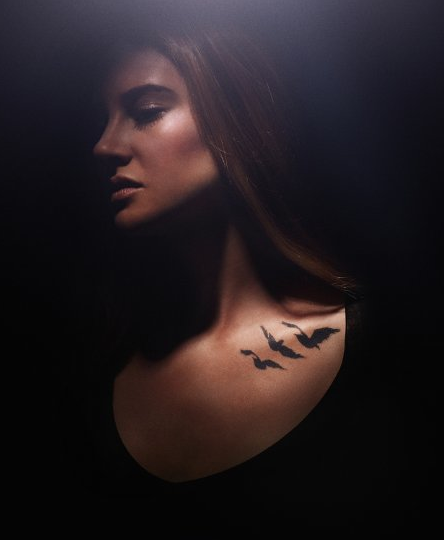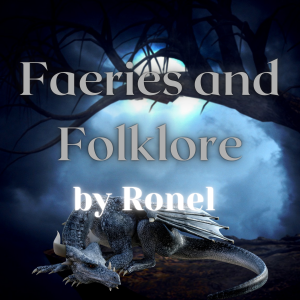Honestly, I have no idea what the difference between a raven and a crow is. To me, they are beautiful black birds.
According to the Collins English dictionary: crow n 1 any large gregarious songbird of the genus Corvus, esp C. corone (the carrion crow) of Europe and Asia: family Corvidae. Other species are the raven, rook, and jackdaw and all have a heavy bill, glossy black plumage, and rounded wings.
See, I’m not so far off.
When I got a prompt a million years ago to write a story featuring raven feathers, I decided to go a step further and add an actual raven as protector and guide to the protagonist. I hadn’t done any research as to how ravens act in folklore when I wrote the stories. But I did do a lot of research for this post, looking at ravens/crows as protectors and guides.
Folklore
Ravens in Japanese Mythology
One of the oldest symbols in Japanese mythology seems to be the three-legged raven Yatagarasu which lead the Emperor Jummu from Kumano no kuni to yamato no kuni. It is thought to inhabit/represent the sun. Its appearance is construed evidence of divine intervention in human affairs.
Though it is represented in art as being a three-legged bird, there is no description in the Kojiki that Yatagarasu had three legs.
Ravens in Native American Mythology
Raven is honoured as a hero in many Northwest Indian tribes’ mythologies. Raven helps the people, is a revered and benevolent transformer figure, though he is also trickster character and many stories deal with the fallout of his frivolous/bad behaviour. Raven has negative traits (gluttony, greed, impatience), but he has good traits, too (and has done great deeds).

Crows are considered good luck by many tribes. Though they eat carrion, they are not associated with the dead. In folklore, their intelligence is their most important feature. (Check out the “further reading” section below and go read all the great crow and raven legends!)
Ravens in Celtic Mythology
Ravens and crows were seen to be aspects of the ancient Irish goddess, The Morrígan, messengers from her to the downtrodden. They have always symbolised death, though. These birds typically appear in groups of three and are seen as a sign that The Morrígan is watching. She is the goddess of battle, strife and fertility. And she sometimes appears as a hooded crow. (I’m definitely going to do more research about her!)
Ravens in Greek Mythology
The ancient Greeks saw the crow as a symbol of Apollo (god of prophecy), and augury (divination using birds) was popular among Greeks.
Apollo also used ravens to send messages to humans – it was how they received word from the god of oracles. And when one raven was foolish enough to tell Apollo that the nymph he was in love with had married a human, all ravens were turned from white to black.

Ravens in Norse Mythology
Odin’s Ravens
Known as Hugin and Munin (pronounced HOO-gin and MOO-nin), these emissaries of Odin go out in the pursuit of more knowledge.
According to the medieval Icelandic historian Snorri Sturluson:
Two ravens sit on his (Odin’s) shoulders and whisper all the news which they see and hear into his ear; they are called Huginn and Muninn. He sends them out in the morning to fly around the whole world, and by breakfast they are back again. Thus, he finds out many new things and this is why he is called ‘raven-god’ (hrafnaguð).
Why ravens?
Well, there’s the carrion aspect. Odin is the god of war and death. Ravens are carrion birds. So they hang around battlefields. It probably made the old Norse warriors feel like Odin was watching over them in battle…
And ravens are exceptionally smart birds. Odin is a really smart guy. Usually the Old Norse Huginn and Muninn are translated to mean “Thought” and “Memory”.
In the Old Norse worldview, the self could be seen as comprising of different parts. So Odin was actually sending his Thoughts out to the world to gather more wisdom and knowledge autonomously. Risky, but certainly rewarding. (What if they didn’t return for whatever reason? Those parts would be lost, even to a god.)

Further Reading
- Feathered Tricksters Since the Dawn of Time
- Three Crows of Arima
- Yata-Garasu – The Ravens of Japanese Myth
- Native American Legends about Ravens
- Native American Legends about Crows
- The Raven and Crow of the Celts
References:
- Simek, Rudolf. 1993. Dictionary of Northern Mythology. Translated by Angela Hall. p. 164.
- Turville-Petre, E.O.G. 1964. Myth and Religion of the North: The Religion of Ancient Scandinavia p. 58-59.
- Price, Neil. 2002. The Viking Way: Religion and War in Late Iron-Age Scandinavia. p. 98.
- Huxley, George ‘White Ravens”, Greek, Roman and Byzantine Studies 8.3 (1967): 199-202.
Modern Culture
Except as symbols of death, I haven’t seen any awesome crows/ravens in movies/TV shows/books – besides the ones below. Have you?
Tris is inked with three ravens on her collarbone, which she explains in the book as “a reminder of where I was…a way to honor my old life.” The birds represent each of the members of the family she leaves behind when she chooses to join the Dauntless—her mother, father, and brother.
This crow sat on the top of a wooden marker, holding Buckbeak the Hippogriff. The crow appeared to be a kind of guard, biting Harry Potter when he tried to free Buckbeak.[1] The crow then flew away when the Executioner used his axe to cut a pumpkin from Rubeus Hagrid‘s patch in two.
My Writing
The Origin of the Fae: Raven/Crow Hybrids
These beautiful black birds have the longevity of the fae, the freedom, cunning and grace of the mortal birds, and are revered across the realms.
They bring guidance, protection and change to those they deem to grace with their presence.
Though they aren’t aligned with any Court, they do favour the Morrígan (more about this faery in a later post).
Origin of the Fae: Faery-Hybrids
All Faery-Hybrids were once other types of Fae. They became whatever Faery-rat, Faery-bat, Faery-baboon or other creature by living a good life and going against whatever their Fae-nature was. Some see this as a reward – after all, Faery-Hybrids are as close to mortal as Fae can get. Others see it as an abomination. Tree Nymphs usually become Faery-Hybrid plants.
Faery Hybrid Raven/Crow translated to Afrikaans: Feetjie Raaf/Kraai
What do you think of ravens/crows? Do you know interesting folktales involving them? Check out my Pinterest board dedicated to ravens/crows in folklore.
You can now support my time in producing folklore posts (researching, writing and everything else involved) by buying me a coffee. This can be a once-off thing, or you can buy me coffee again in the future at your discretion.
Want a taste of my writing? Sign up to my newsletter and get your free copy of Unseen, Faery Tales #2.


No-one writes about the fae like Ronel Janse van Vuuren.








Interesting read. I have a bunch of these in my backyard trees. They troll the neighborhood and hit my yard around 4 pm.
“they troll the neighbourhood” LOL. We mostly have plovers, hadedas and guinea fowl — and pigeons, of course. I’ve only seen crows when travelling.
Crows and ravens are very smart. They remember those who did them wrong. Suiting they used a crow in the movie The Crow.
Looks like a fun movie to watch this Halloween 🙂
The Rainbow Crow is a Lenni Lenape story. (It’s a book. You can buy it. It’s a children’s story, but still.) And that’s NorthEast Native American people. (Yeah, I know our tribe was relocated a bunch of times. But we were Northeast first. #Grandfathers)
Corvids, or crows, are a family of birds. Both crows and ravens are in that family (because why not make things complicated, right?). So a raven can be a crow, but a crow can’t be a raven.
Raven is to crow as labrador is to dog.
They’re also highly intelligent and can be befriended with shiny objects or small stones.
“The way the crow flies,” means to take the shortest, most direct route.
Added the Rainbow Crow to my TBR 🙂 Didn’t know that about crows and ravens!
I’ve had a fascination for ravens and other corvids for years. They slip into my writing all the time. The most prominent being Negesydd, the jackdaw in my WIP series set in North Wales. His name means ‘guide’ in Welsh and he takes on that role for my MC., especially after her policeman father dies.
According to my research, “The jackdaw was considered sacred in Welsh folklore as it nested in church steeples – it was shunned by the Devil because of its choice of residence.” So, this jackdaw is at her father’s funeral and key in other scenes.
When we lived in North Wales, we had jackdaws in our garden and there were crows and rooks in the area. One of those inspired Negesydd.
Fascinating! Sounds like a great character — with underlying themes! — in your WIP.